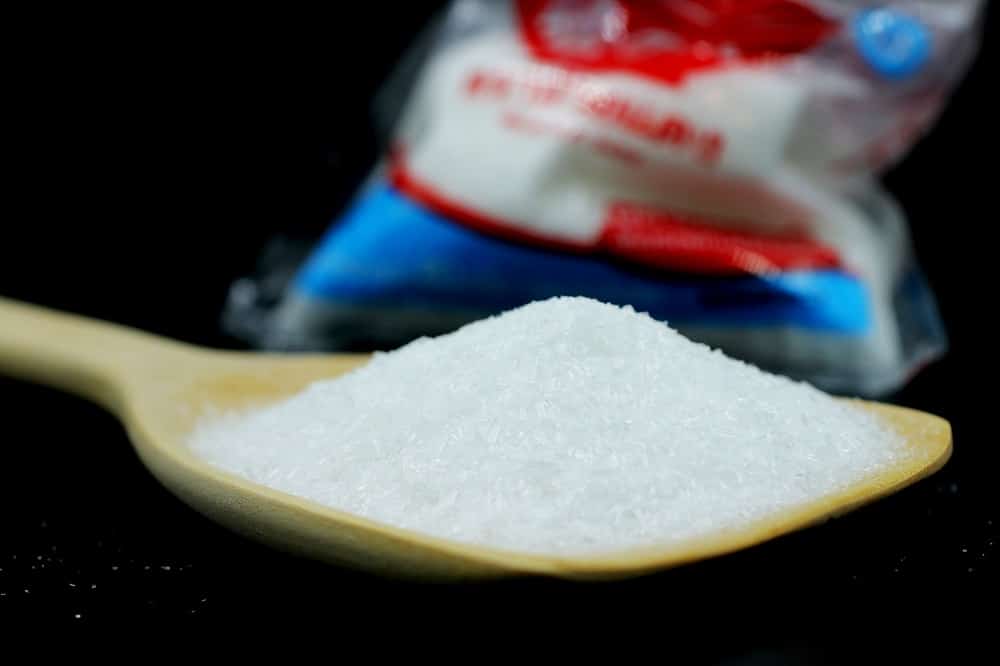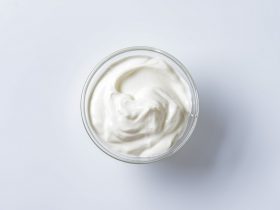A woman’s diet during pregnancy is important to maintain good health for the mother and to ensure proper growth and development for her baby. However, an improper diet can likewise bring about disorders, illnesses or risks both to the mother and her developing fetus.
Chinese food is a cuisine considered by many as unsafe to eat during pregnancy. This is mainly because of its high monosodium glutamate (MSG) content. A pregnant woman should be aware of this ingredient and its potential harmful effects.
What is Considered “Chinese Food”?
What we call “Chinese food” is food that is actually commonly found outside of China. This is the type of food that is available at restaurants in different countries, which might have originated from China but has many variations adapted to suit the local palate.
Some of the most common dishes labeled as Chinese Food are:
- Spring or egg rolls
- Crispy seaweed
- Note: There are other issues with Seaweed
- Wonton soup
- Steamed dumplings
- Egg fried rice
- Spare ribs
- Chicken and sweet corn soup
- Sweet and sour meat dishes
- Stir-fried noodles
- Chop suey
- Sesame chicken
- Black bean sauce dishes
- Oyster sauce dishes
- Szechuan style dishes
Chinese food is typically labeled as unsafe to eat during pregnancy. This is not entirely true, however, as not all Chinese food is bad for pregnant women. It is not entirely false, either, because these foods are known to have high MSG content. This particular ingredient is what pregnant women should be wary of.
Is MSG Harmful to Humans?

Monosodium glutamate (MSG) is a substance used widely in different foods as a flavor enhancer. It is derived from L-glutamic acid, a naturally occurring amino acid in various food products. MSG brings about a specific taste called umami, which is considered the fifth basic taste in addition to salty, sweet, sour and bitter. It enhances overall flavor intensity and improves food palatability (Zanfirescu et al., 2019).
In some countries, MSG is also known as “China salt” (Niaz et al., 2018). Other well-known umami substances are inosine 5’-monophosphate (IMP) and guanosine 5’-monophosphate (GMP). These can be found in natural sources as well as additives in food products, such as processed meat, canned vegetables and soups, sauces, dried bouillon cubes, and salty snacks (Zanfirescu et al., 2019).
The average daily human intake of MSG is estimated at around 0.3 to 1 gram in European countries. It is generally recognized as safe by a lot of food safety regulatory agencies, including the following:
- Joint FAO/WHO Expert Committee on Food Additives (JECFA)
- US Food and Drug Administration (FDA)
- European Food Safety Association (EFSA)
MSG is considered to be a substance generally recognized as safe (GRAS). Any food additive can only be included on the GRAS list if it has been widely used in food products prior to 1958 (approval based on experience), or when its safety for human intake has been confirmed by scientific toxicological reports based on estimated dietary intake. Still, several studies have questioned the safety of MSG for human consumption (Zanfirescu et al., 2019).
The MSG hypersensitivity symptom complex is known to be characterized by headache, burning sensation in the lower arm and chest, tachycardia, drowsiness, nausea, bronchospasm, sweating, and generalized weakness (Castañeda et al., 2016).
In addition to MSG, other food substances may also cause the development of allergic reactions (Bawaskar et al., 2017):
- Meta-bisulfate
- Soya sauce
- Carmoisine
- Sunset yellow
- Tartrazine
- Scombroidosis
Zanfirescu et al. (2019) made a systematic review to check the available literature regarding the adverse effects of MSG. They were able to include 16 published studies that reported the possible risks that are associated with MSG exposure.
Their literature review showed that a lot of studies indicating adverse effects of MSG (including cardiotoxicity, hepatotoxicity, neurotoxicity, premalignant alterations) have several methodological flaws and are not relevant for extrapolation to human exposure and dietary intake. Likewise, those studies were based on excessive doses of MSG that are not the levels normally consumed in food products (Zanfirescu et al., 2019).
MSG has been linked to increased pain sensitivity and to development of atopic dermatitis, but Zanfirescu et al. (2019) found little supporting evidence from available literature.
MSG has also been postulated as a food trigger for migraine headaches. Shimada et al. in 2013 demonstrated that MSG is associated with adverse effects of headache and short-term blood pressure elevation over 5 days of intake in humans.
Obayashi & Nagamura in 2016 made another literature review about the risk of headache after oral intake of MSG. However, they found that previous studies showed no significant difference in the incidence of headache following MSG ingestion.
Although MSG is considered generally safe, its possible toxic effects must not be underestimated. Especially when used in large amounts, MSG can cause negative consequences (Niaz et al., 2018).
What is the Chinese Restaurant Syndrome?
The term “Chinese restaurant syndrome” has been used to refer to MSG hypersensitivity (Zanfirescu et al., 2019). It was first reported by Kwok in 1968. He said that some transient symptoms occurred after consumption of Chinese dishes, including numbness, general weakness, and palpitations (Obayashi & Nagamura, 2016).
Within a few hours of consumption, Chinese restaurant syndrome can result in headache, giddiness, abdominal pain, sweating and urticaria. However, delayed type hypersensitivity may also occur up to 8 to 16 hours after MSG intake and may persist for 24 hours. This can be life-threatening in the form of angioedema (Bawaskar et al., 2017). Other symptoms that may possibly appear later include dizziness, flushing, syncope, and facial pressure (Niaz et al., 2018).
A case report of Chinese restaurant syndrome was presented by Bawaskar et al. in 2017. The case involved that of a male who was 23 years old and brought to a hospital in India due to complaints of difficulty in speaking, inability to swallow saliva, and continuous drooling and spitting. He had angioneurotic edema of the uvula and the surrounding structures after eating Chinese food.
The patient ate Chinese triple fried rice for dinner 10 hours prior to consultation. Within 1 hour of eating, he felt giddiness, sweating and itchiness all over his body. These subsided without any medication. He had no history of allergy or bronchial asthma (Bawaskar et al., 2017).
Two hours prior to consultation, the patient woke up with difficulty in swallowing and speaking. Upon examination, his posterior pharynx could not be visualized. His uvula and soft palate were severely edematous (Bawaskar et al., 2017).
Early recognition of symptoms of hypersensitivity following oral consumption of MSG is important to avoid fatal outcomes. Many other human studies have been conducted to determine any causal relationship between MSG and the Chinese restaurant syndrome, but results remain to be inconsistent.
Can You Eat Chinese Food During Pregnancy?
MSG is considered generally safe for oral consumption even by pregnant women. However, those that may have hypersensitivity can develop strong reactions to it. For this reason, it is best for pregnant women to avoid this type of food.
Restaurants have dishes that do not contain MSG. Supermarkets also have foods that are labeled as MSG-free. Pregnant women can opt to choose these to avoid any untoward reaction from MSG.
Homemade Chinese food can be made safer for pregnant women compared to those bought from restaurants or supermarkets, as long as it is properly cooked and no MSG or similar substance is used as ingredient. Also be sure to stick with healthier Chinese food dishes, such as rice, noodles, fish, lean meat, and steamed vegetables.
Final Thoughts
Chinese food is not entirely harmful. As long as it is cooked properly and thoroughly, it should not harbor any food-borne pathogens that may cause disease. However, its MSG content is what pregnant women should be cautious about.
In all types of cuisines, and not just Chinese food, some ingredients are safer than others. During pregnancy, it is wise to be vigilant about what makes up the food that you eat. You must be aware not only about the type of food, but also its additives, and make sure that it is safe for you and your baby.
References
- Zanfirescu, A., Ungurianu, A., Tsatsakis, A., Nitulescu, G., Kouretas, D., Veskoukis, A., …, & Margina, D. (2019). A review of the alleged health hazards of monosodium glutamate. Comprehensive Reviews in Food Science and Food Safety 18(4), 1111-1134. doi: 10.1111/1541-4337.12448
- Niaz, K., Zaplatic, E., & Spoor, J. (2018). Extensive use of monosodium glutamate: A threat to public health? EXCLI Journal: Experimental and Clinical Sciences 17, 273-278. doi: 10.17179/excli2018-1092
- Castañeda, J., Villaseñor, R., Saldaña, M., Rojas, P., Perez, O., Rojas, C., & Silva, M. (2016). Neonatal exposure to monosodium glutamate induces morphological alterations in suprachiasmatic nucleus of adult rat. International Journal of Experimental Pathology 97(1), 18-26. doi: 10.1111/iep.12157
- Bawaskar, H., Bawaskar, P., & Bawaskar, P. (2017). Chinese restaurant syndrome. Indian Journal of Critical Care Medicine 21(1), 49-50. doi: 10.4103/0972-5229.198327
- Obayashi, Y., & Nagamura, Y. (2016). Does monosodium glutamate really cause headache: A systematic review of human studies. The Journal of Headache and Pain 17, 54. doi: 10.1186/s10194-016-0639-4
- Shimada, A., Cairns, B., Vad, N., Ulriksen, K., Pedersen, A., Svensson, P., & Baad-Hansen, L. (2013). Headache and mechanical sensitization of human pericranial muscles after repeated intake of monosodium glutamate (MSG). The Journal of Headache and Pain 14(1), 2. doi: 10.1186/1129-2377-14-2




